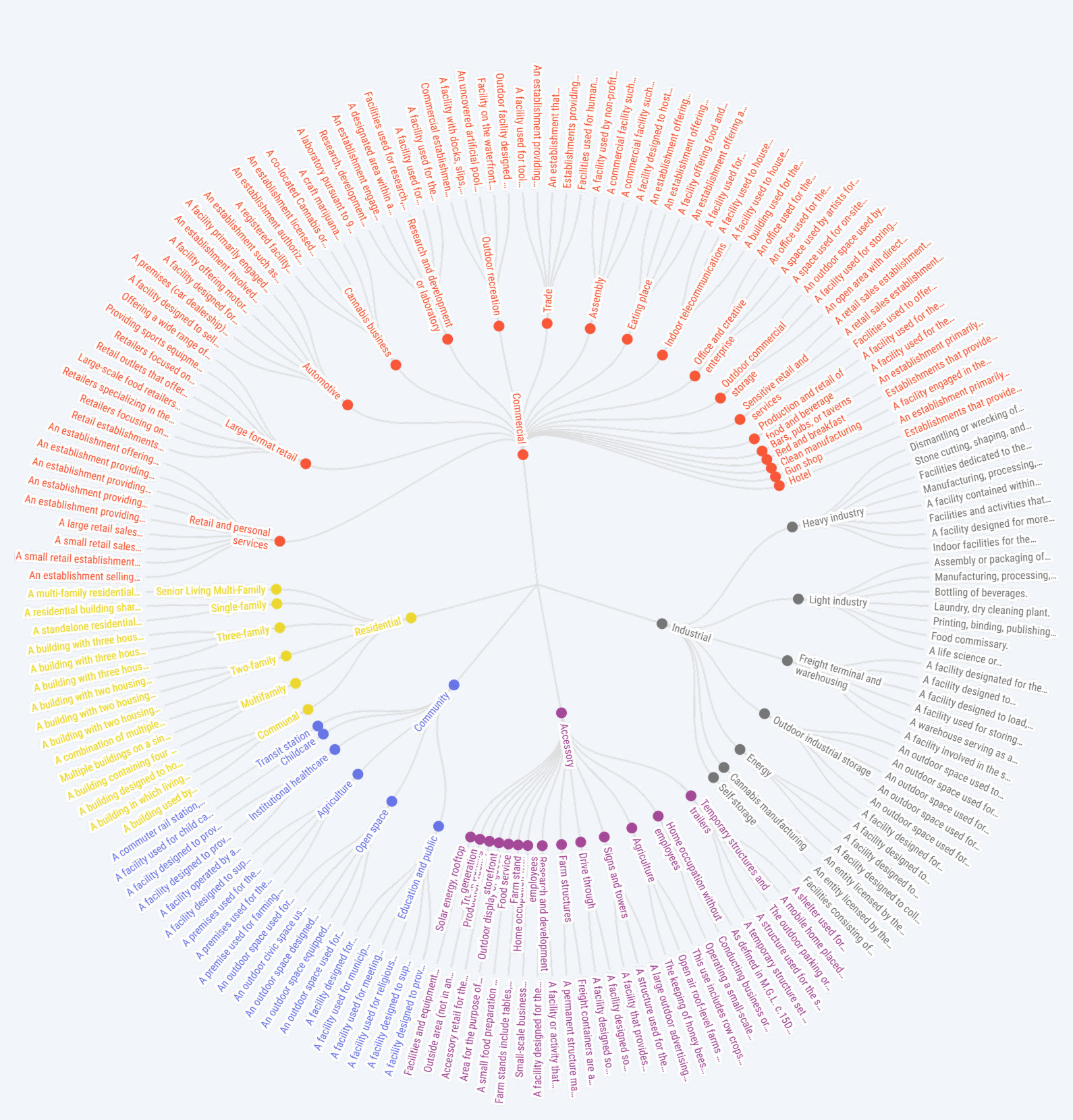Working on comprehensive zoning rewrites, we wanted to avoid overwhelming users with lists of hundreds of land use definitions, many of which are very similar and similarly applied across the districts, while maintaining a useful level of specificity around uses and incorporating a practical approach to performance-based zoning.
To accomplish this, our team grouped land uses based on their impacts on neighborhoods while maintaining important community distinctions. In Lynn, this resulted in condensing 170 individual use definitions into 51 functionally unique groups organized within 5 main use types.
Performance-based approach
The north star for performance-based zoning (or outcomes-based zoning) is a world in which uses are undefined, and instead, the actual impacts are regulated, including vibration, noise, light, and traffic. In that world, a user could undertake any novel activity as long as it fits with the defined character of the district. Unfortunately, this idealized world is unenforceable without strict surveillance technology that is unpopular and unwieldy, and it has the side effect of requiring both the applicant and the building permit-granting authority (i.e. building commissioner) to make a scientific assessment on potential impact.
To bring the idealized version to a reality that is interpretable by applicants and the permit-granting authority, we analyzed potential neighborhood impacts using performance-based criteria: noise generation, traffic patterns, building intensity, operating hours, and other factors that contribute to neighborhood character. Uses with similar impact profiles became logical candidates for grouping. Within those groups we also maintained flexibility to not accidently exclude uses that would otherwise fit within the neighborhood character because the activity combines several activities in a novel way, which we covered in our climate tech zoning post.
For example, in the Assembly group, we combined uses where many people come together for events, including funeral homes, private clubs, and entertainment venues, with the thought that these activities have a similar neighborhood impact. Similarly, we grouped light industrial activities like “assembly or packaging of articles,” “bottling of beverages,” and “printing and publishing” under a functional group. These uses share similar building requirements, noise levels, and truck traffic patterns.
Example use table
The following table shows how functional use groups can be applied. This table is idealized and not representative of an exact community.
After grouping uses by impact characteristics, we tested each group against our actual zoning districts. If two uses had exactly the same application pattern across all districts (allowed, prohibited, or required special permits in the same districts) and did not have additional special requirements in the rest of the ordinance that would cause the activity to be regulated differently (as in some industrial activities like cannabis manufacturing), they stayed grouped together. But if a community distinction emerged that wasn’t captured by our initial groupings, we refined the categories.
For example, during the comprehensive rewrite of Lynn, we separated restaurants and bars. While both serve the public, restaurants and bars/pubs/taverns often have different operating hours, noise levels, and alcohol licensing.
How functional use groups benefit zoning code users
This approach delivers practical benefits:
- The definitions and use definitions sections are easier to navigate because similar definitions are grouped together.
- The staff authority for determining what a proposed use should be classified as has a stronger nested framework for making a determination.
- The use table is considerably shorter and thereby easier to interpret than other zoning codes.
- Business owners can more easily identify in which districts their use is allowed, which clarifies the regulations and increases investment into the community.
The final result is a use table that contains as few dimensions as possible while remaining user-friendly and responsive to community needs.
